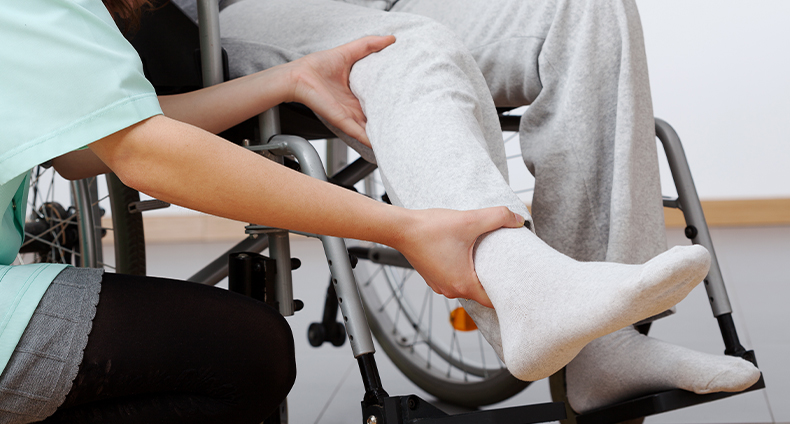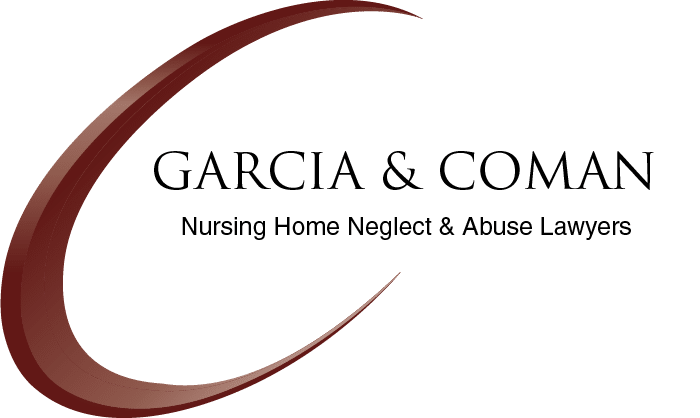
NO RECOVERY NO FEE Free Case Review
Long Beach Nursing Home Attorneys Handling Broken Bone Injuries
Legal help in California when an elderly loved one suffers bone breaks and fractures
Broken bone injuries can be painful, debilitating, and require extensive medical treatment and rehabilitation. In nursing homes, it is essential to take preventive measures, such as fall prevention programs and proper staff training, to minimize the risk of these injuries and ensure the safety and well-being of the residents. When broken bone injuries do occur, it is crucial to investigate the circumstances thoroughly to determine if neglect or abuse contributed to the incident, and if so, hold the responsible parties accountable.
Discovering that your elderly loved one has suffered bone breaks or fractures is a distressing and emotionally challenging experience. At Garcia & Coman, our Long Beach nursing home abuse and neglect attorneys understand the devastating impact this can have on both the injured individual and their family. Our dedicated California team of compassionate attorneys is here to provide the legal support and guidance you need during this difficult time. With over 150 years of combined experience and $3 billion recovered for victims across the country, let us be the law firm you can trust.
NO RECOVERY NO FEE Free Case Review
How can we help?
- How do broken bones occur in nursing homes?
- What are the different types of bone fractures?
- What bones are older people most likely to break?
- What are the treatments for broken bones?
- What can happen if a broken bone goes untreated?
- Who is liable for my California broken bone claim?
- Do you have an attorney who handles nursing home neglect near me?

How do broken bones occur in nursing homes?
Broken bones can occur in nursing homes due to various factors, and the risk of such injuries is often heightened among elderly residents who may have limited mobility, weaker bones, and other age-related health issues. Here are some common ways broken bones can occur in nursing homes:
- Falls. Falls are one of the leading causes of broken bone injuries in nursing homes. Elderly residents may experience balance issues, muscle weakness, or gait problems, making them more susceptible to falls, especially in environments with hazards like slippery floors, inadequate lighting, or cluttered hallways.
- Improper transfers. Improper transfers from beds to wheelchairs, chairs, or other surfaces can lead to fractures, especially if the staff fails to use appropriate assistive devices or techniques.
- Lack of supervision: Inadequate supervision and monitoring of residents can result in accidents, such as falls from beds, chairs, or during mobility attempts.
- Rough handling. Rough handling during caregiving activities, such as transferring or repositioning residents, can lead to fractures, especially if the staff lacks proper training.
- Inadequate fall prevention measures. Nursing homes should implement fall prevention programs and safety protocols to reduce the risk of falls and related injuries. Failure to do so may result in avoidable fractures.
- Medication side effects: Some medications can increase the risk of falls due to dizziness, drowsiness, or other side effects. If not properly managed or monitored, medication-related falls may occur.
- Neglect and abuse. In cases of neglect or abuse, residents may not receive the care and assistance they need, leading to accidents and fractures that could have been prevented with proper attention and support.
It is essential for nursing homes to prioritize the safety of their residents by implementing comprehensive fall prevention programs, providing adequate supervision and training for staff, and ensuring a safe and supportive environment. Regular assessments and prompt medical attention following any accidents can help reduce the risk of broken bones and protect the well-being of elderly residents.
What are the different types of bone fractures?
The elderly can fracture and break their bones in a variety of ways, including:
- Simple (closed) fractures, where the broken bone stays within in the skin
- Compound (open) fractures, where the broken bone tears through the skin
- Incomplete (hairline) fractures, where the crack in the bone does not go all the way across the bone
- Complete fractures, where the crack goes all the way across the bone
There are also fragility fractures, which occur from a very small impact, like performing daily activities or a small fall. Typically, younger people do not suffer from fragility fractures.
Per HealthInAging.org, “One in four men and one in two women over age 50 will break a bone due to osteoporosis.”

What bones are older people most likely to break?
HealthInAging.org notes that a person aged 85 or older is four times more likely to break a bone than a person between 65 and 75 years old. Further, older adults are more likely to suffer the following fractures:
- Hip or pelvis
- Wrist or arm
- Bones in the spine or backbone (vertebrae)
- Leg or ankle
- Hand
- Ribs
They also state that up to 300,000 seniors break their hips each year, and 90% of the time, a fall causes these breaks.
What are the treatments for broken bones?
The treatments for fractured and broken bones include the following:
- Immobilization. Immobilizing the broken bone is often the first step in treatment. This may involve using casts, splints, or braces to keep the bone in place and prevent further movement, allowing the bone to heal properly.
- Surgery. Some fractures require surgical intervention to properly align the bones and stabilize them for healing. Internal fixation devices, such as screws, plates, rods, or wires, may be used to hold the bones together during the healing process.
- Pain management. Pain relief is an essential aspect of fracture treatment. Over-the-counter or prescription pain medications may be used to manage pain during the healing process.
- Rehabilitation. After the initial healing period, physical therapy or rehabilitation may be necessary to restore strength, flexibility, and function to the affected area. Rehabilitation helps improve mobility and reduce the risk of complications.
- Follow-up care. Regular follow-up visits with healthcare professionals are essential to monitor the healing progress and address any potential complications.
- Weight-bearing restrictions. In some cases, weight-bearing restrictions may be imposed to prevent excessive strain on the healing bone.
The recovery period for a broken bone varies depending on the individual, the type of fracture, and the treatment provided. It is crucial for the senior to follow the prescribed treatment plan and attend all follow-up appointments to ensure proper healing and minimize the risk of complications.
What can happen if a broken bone goes untreated?
If a broken bone goes untreated or is not properly managed, it can lead to various complications and may significantly impact an individual's health and quality of life. Some potential consequences of untreated broken bones include:
- Delayed or improper healing
- Deformities
- Chronic pain
- Limited mobility
- Nerve damage
- Joint problems
- Nonunion or malunion
- Infections
- Blood vessel and soft tissue damage
- Deterioration of overall health
It is essential to seek medical attention promptly if a broken bone is suspected to ensure appropriate evaluation, treatment, and management. Timely and proper care can significantly improve the chances of successful healing and reduce the risk of complications associated with untreated fractures. If you or a loved one has suffered a broken bone in a nursing home, talk to the Long Beach attorneys at Garcia & Coman to find out your next steps.
Who is liable for my California broken bone claim?
Determining liability for a broken bone claim in Long Beach will depend on the specific circumstances surrounding the injury. Liability may be attributed to one or multiple parties based on factors such as negligence, recklessness, or failure to provide a safe environment. Here are some potential parties that could be liable for your broken bone claim:
- Nursing home facility. If the broken bone occurred in a nursing home due to negligence or inadequate care, the facility itself may be held liable. This could include issues such as lack of fall prevention measures, understaffing, improper training, or neglectful care.
- Staff members. Individual staff members, such as caregivers, nurses, or aides, may be held personally liable if their actions or omissions directly contributed to the broken bone injury. This could involve cases of rough handling, improper transfers, or failing to assist residents in safe mobility.
- Contractors or maintenance companies. If the injury resulted from hazardous conditions on the premises, such as slippery floors or faulty equipment, liability might fall on contractors or maintenance companies responsible for maintaining the facility.
- Medical professionals. If the fracture was misdiagnosed or improperly treated by medical professionals, they may be held liable for medical malpractice.
- Equipment manufacturers. In some cases, broken bones may occur due to faulty medical equipment or mobility aids. In such instances, the manufacturer of the equipment may be held responsible.
- Third parties. Liability may also involve third parties, such as visitors or other residents whose actions caused or contributed to the injury.
To determine liability accurately, it is crucial to gather evidence, conduct a thorough investigation, and consult with our experienced legal professionals who can assess the circumstances of your case. Our attorneys are skilled in nursing home abuse and neglect, and can help identify the responsible parties and guide you through the process of pursuing a broken bone claim in Long Beach.
Do you have an attorney who handles nursing home neglect near me?
Garcia & Coman has offices at 180 E. Ocean Blvd., Suite 1100, Long Beach, CA 90802.
Skilled California nursing home neglect lawyers handling broken and fractured bones
If you or a loved one have suffered from nursing home neglect, broken bones, or any form of injury due to negligence, it's time to seek justice. At Garcia & Coman, we are dedicated to fighting for the rights of victims and their families. Our experienced team of attorneys understands nursing home abuse and neglect cases, and we are ready to stand by your side and pursue the compensation you deserve. Call our Long Beach offices or fill out our contact form today.
We only collect attorney fees if we win your case. We have additional offices in Louisville, Los Angeles, Phoenix, and New Orleans. Our services are available in both English and Spanish.
Se habla español.

